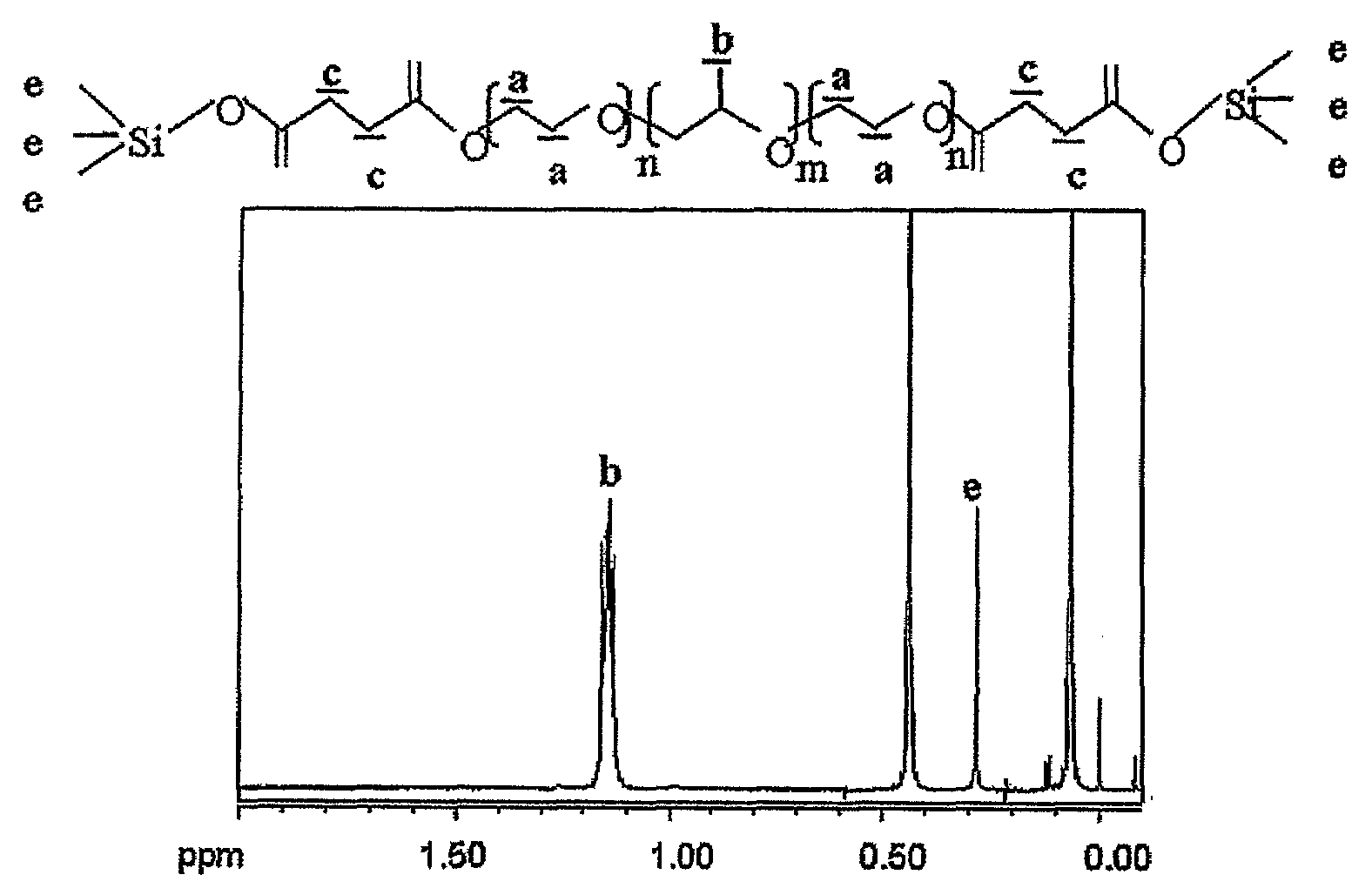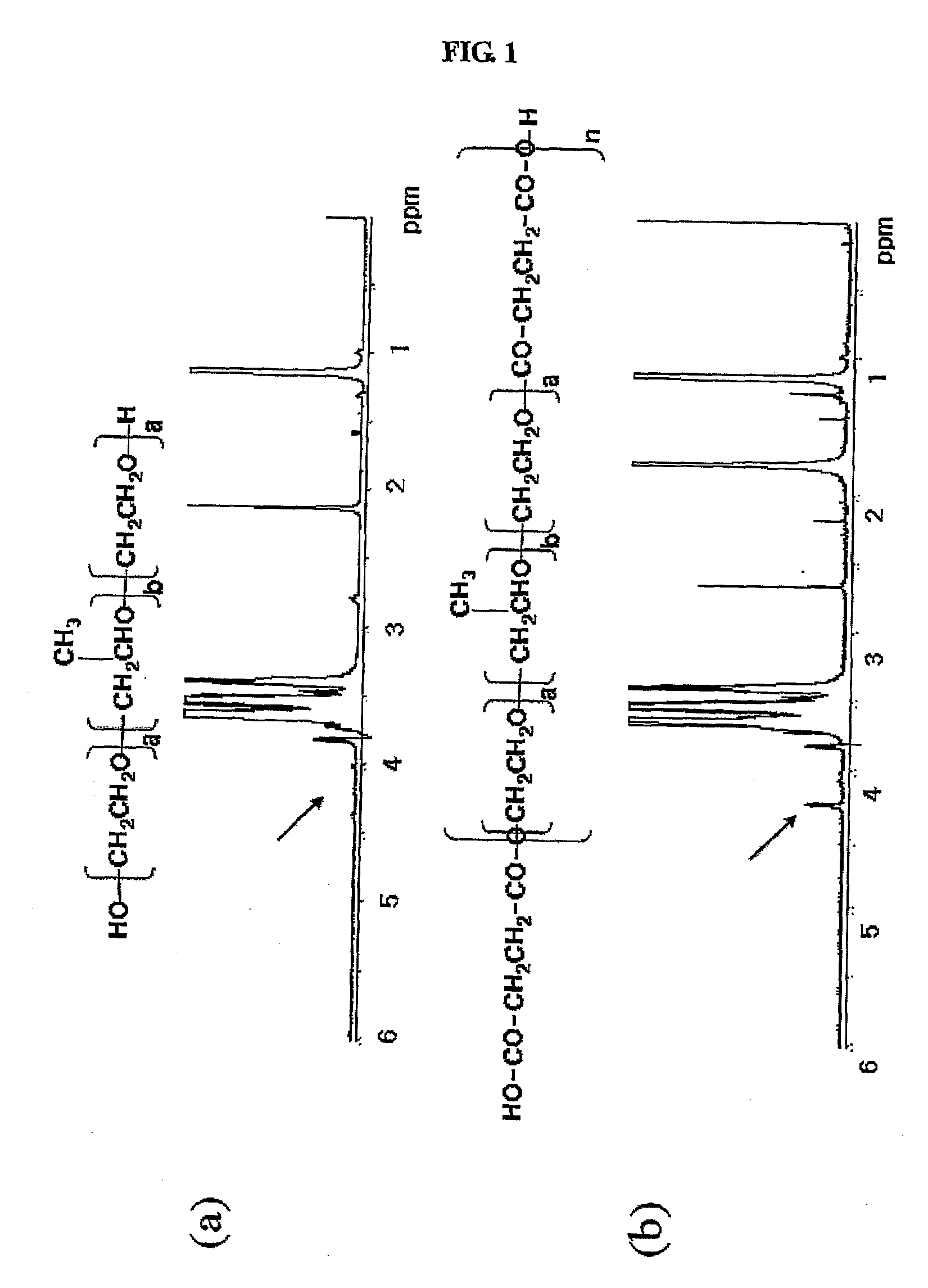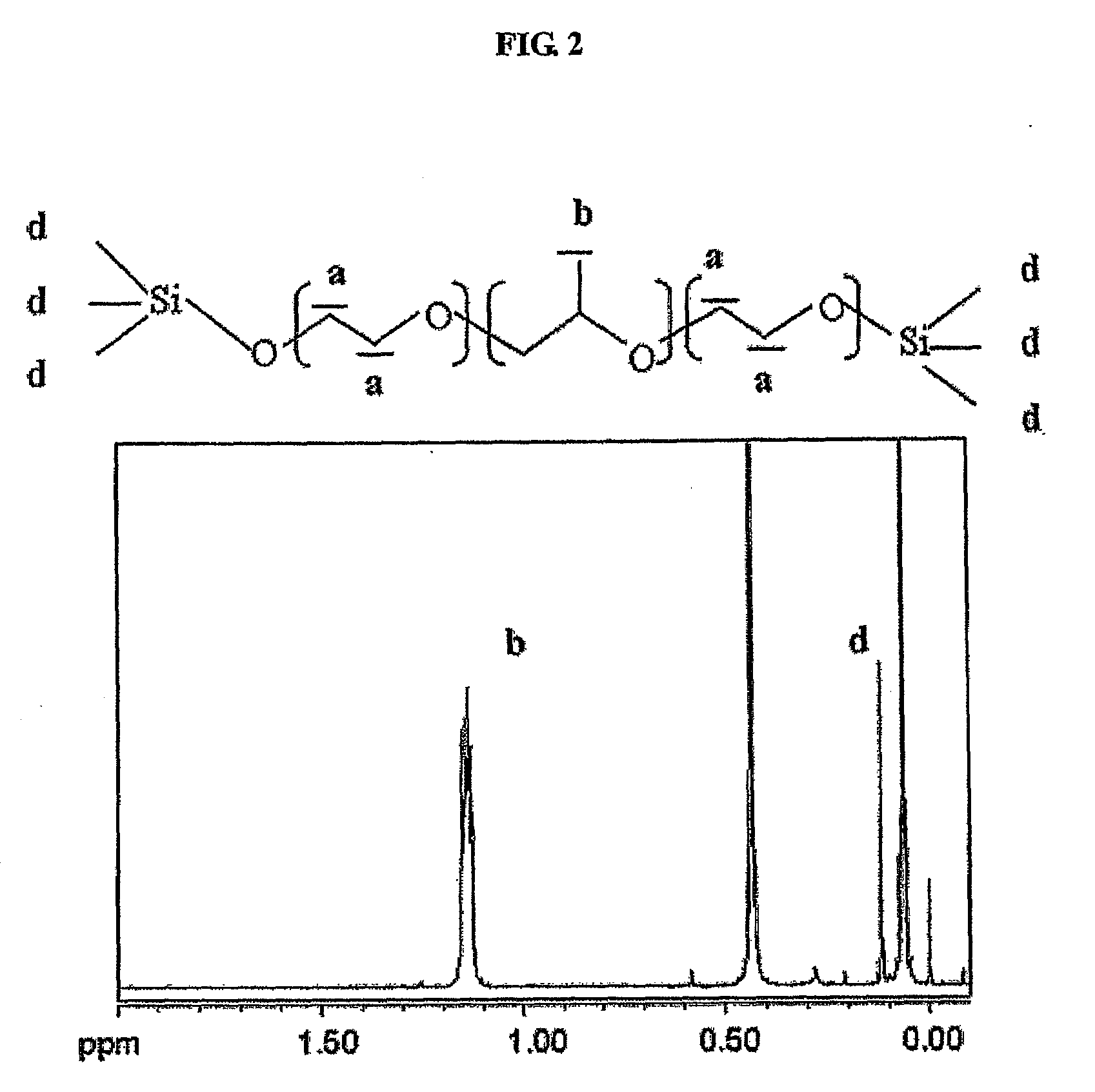Composition for inhibiting adhesion
a technology of compound and adhesion, applied in the direction of drug composition, bandage, dermatological disorder, etc., can solve the problems of serious clinical sequelae, not completely preventing adhesion after surgery, and serious problems, and achieve the effect of easy absorbing and excreting
- Summary
- Abstract
- Description
- Claims
- Application Information
AI Technical Summary
Benefits of technology
Problems solved by technology
Method used
Image
Examples
preparation example 1
Synthesis of Multiblock Copolymer Composed of Poloxamer 407 Using Succinyl Dichloride
[0108]10 g of Poloxamer 407 (Pluronic® F-127, BASF, molecular weight: 12,500 daltons, PEO:PPO=101:56) was poured into a 100-ml one-neck round bottom flask and heated in a boiling oil heated at 120° C. and then, moisture contained in the polymers was eliminated for 2 hours while pressure was being reduced. After the removal of pressure reduction, the reaction temperature was set to 100° C. with nitrogen being flowed and then 100 ml of acetonitrile was added to the flask. The reaction flask was equipped with a dean stark and cooling unit.
[0109]After the moisture within the reactants was completely removed by eliminating 20 ml of acetonitrile that was distilled out through the dean stark, 1 equivalent of succinyl dichloride was added to the reservoir of the dean stark device and reacted for 24 hours. After 24 hours, 96 ul of succinyl chloride was added again to the dean stark device so as to substitute...
preparation example 2
Synthesis of Multiblock Copolymers Composed of Poloxamer 188 Using Adipoyl Dichloride
[0112]With the exception that Poloxamer 188 (Pluronic® F-68, BASF, molecular weight: 8,000 daltons, PEO:PPO=80:27) was used as a basic unit of multiblock copolymer and adipoyl dichloride was used as a dicarboxylic acid linker, multiblock copolymers having an average molecular weight of 160,000 were synthesized in accordance with the same methods as used in Preparation Example 1. Through the peak generation near 4.2 ppm and terminal peak analysis due to the introduction of dicarboxylic acid using nuclear magnetic resonance, the produced multiblock copolymers were identified as the poloxamers linked by dicarboxylic acid.
preparation example 3
Synthesis of Multiblock Copolymers Composed of Poloxamer 237 Using Succinyl Dichloride
[0113]With the exception that Poloxamer 237 (BASF, molecular weight: 7,000 daltons, PEO:PPO=64:37) was used as a basic unit of multiblock copolymer, multiblock copolymers having an average molecular weight of 150,000 were synthesized in accordance with the same methods as used in Preparation Example 1 using succinyl dichloride as a dicarboxylic acid linker. Through the peak generation near 4.2 ppm and terminal peak analysis due to the introduction of dicarboxylic acid using nuclear magnetic resonance, the produced multiblock copolymers were identified as the poloxamers linked by dicarboxylic acid.
PUM
| Property | Measurement | Unit |
|---|---|---|
| weight average molecular weight | aaaaa | aaaaa |
| weight average molecular weight | aaaaa | aaaaa |
| weight average molecular weight | aaaaa | aaaaa |
Abstract
Description
Claims
Application Information
 Login to View More
Login to View More - R&D
- Intellectual Property
- Life Sciences
- Materials
- Tech Scout
- Unparalleled Data Quality
- Higher Quality Content
- 60% Fewer Hallucinations
Browse by: Latest US Patents, China's latest patents, Technical Efficacy Thesaurus, Application Domain, Technology Topic, Popular Technical Reports.
© 2025 PatSnap. All rights reserved.Legal|Privacy policy|Modern Slavery Act Transparency Statement|Sitemap|About US| Contact US: help@patsnap.com



